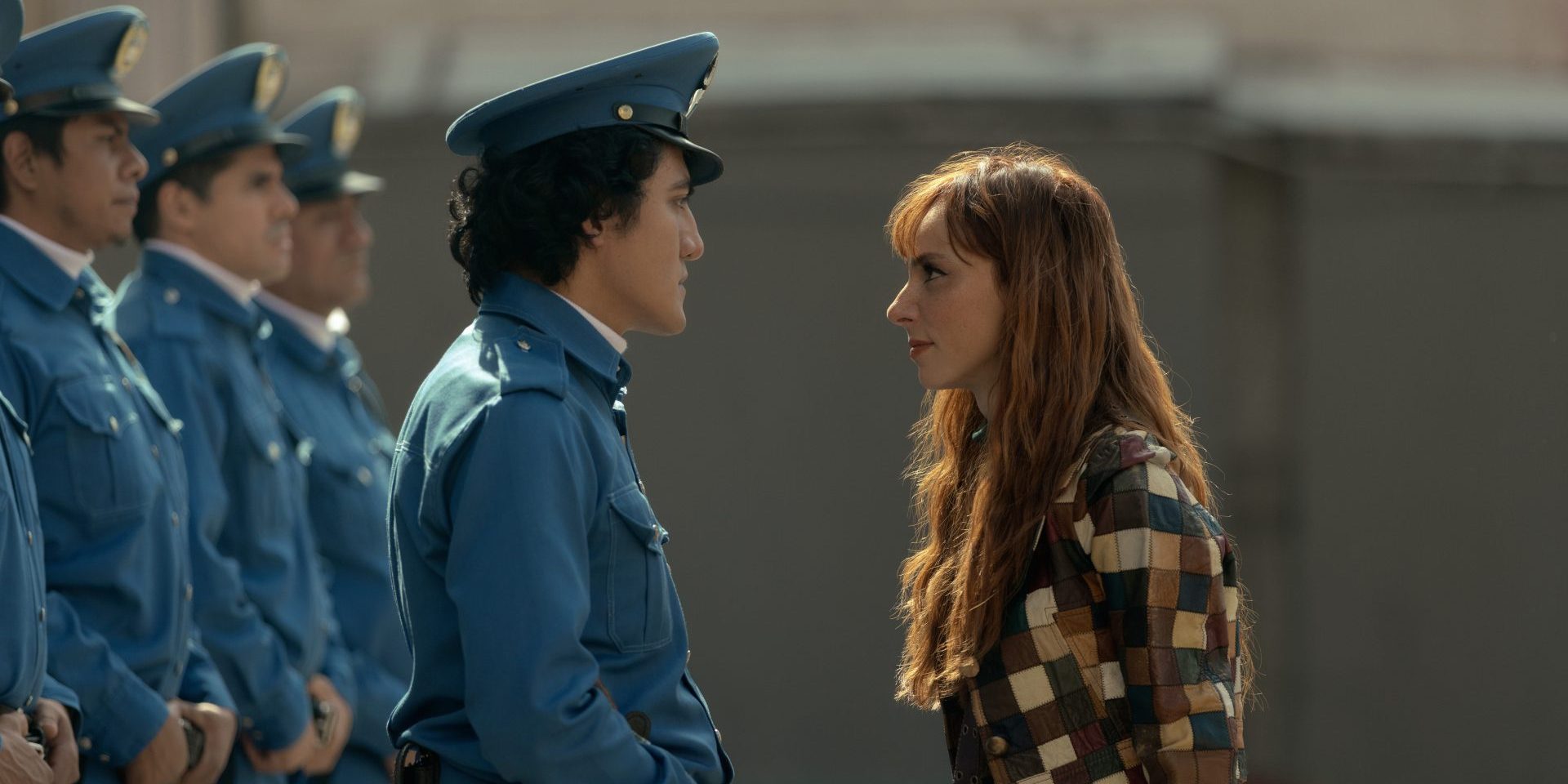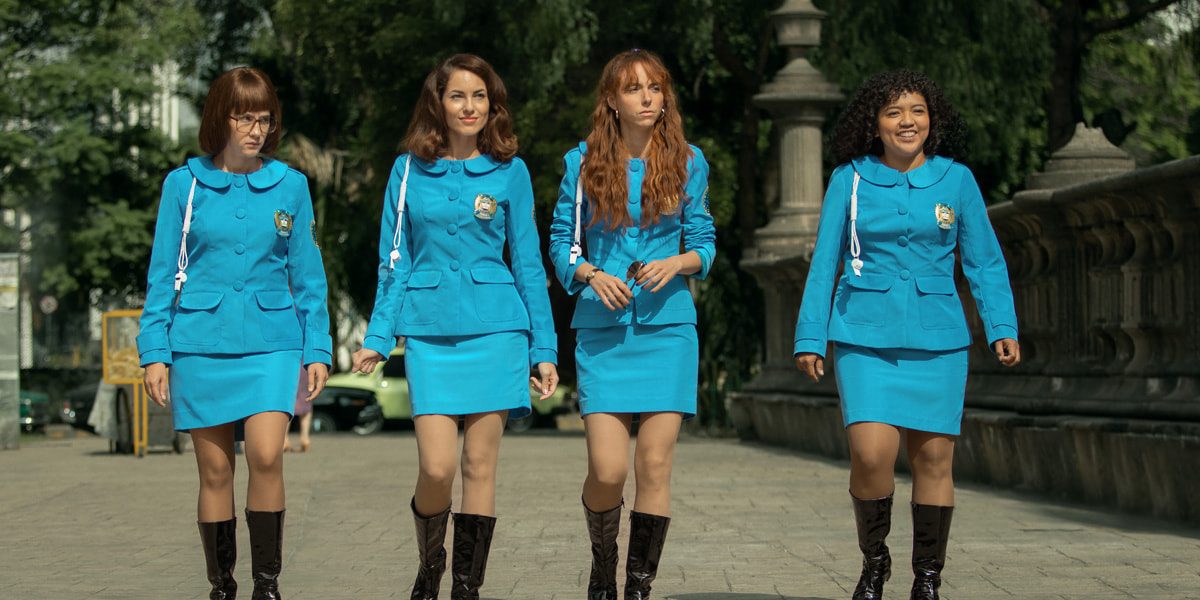Apple TV+’s ‘Women in Blue’ is a series that highlights a significant and timely story. Originally titled ‘Las Azules’ in Spanish, the show is set in 1971 and follows the formation of Mexico City’s first female police force. Created by Pablo Aramendi and Fernando Rovzar, the series centers on four women who join this pioneering team to track down an elusive serial killer. Established by the administration as a public relations move to distract from the police department’s failure to apprehend the killer, the task force initially seems like a mere PR exercise. However, as the women realize the true challenges of wielding the power they’ve been granted, they find renewed determination to solve the case.
The four protagonists come from diverse backgrounds, each shaping their approach to their work uniquely. Maria, a wife and mother, sees her traditional beliefs about women’s domestic roles dissolve, prompting her to join the force alongside her sister, Valentina. The latter is a rebellious social activist who believes in the power of change. Gabina hails from a family of police officers, while Ángeles is a dedicated fingerprint analyst driven by results. Together, they bring a range of expertise and perspectives to the team, challenging the ultra-conservative norms around female participation in the workforce, especially in the male-dominated field of policing. Given the hyper-realistic social context in which the series is set, the true events that might have inspired it must also be explored.
Women in Blue Draws From a Real Police Experiment
Inspired by true events, ‘Women in Blue’ takes several creative liberties and occasionally departs from the actual story. Despite these digressions, the series raises important questions about society and the challenges faced by the four women, reflecting the struggles of 1970s Mexico City and the issues present in today’s world. Through its portrayal of the protagonists’ personal and professional battles, the show highlights the ongoing perils of gender inequality and the enduring fight for women’s empowerment in male-dominated fields.

The first female task force in Mexico was formed in the 1930s and again in the 1970s, known as the “Female Police,” with 69 women initially joining. While only a little has been documented about their work, this experimental group inspired the creators of the series to build a realistic story. The series draws from the experiences of these pioneering women, incorporating the challenges they faced, such as being limited to menial tasks and administrative roles. While talking about this inspiration, Natalia Téllez, who plays the role of Valentina, said, “It’s wonderful to be able to pay tribute to these women. The only press that exists was about their legs and their uniforms and now the real story of what they achieved and what they were fighting for is told. It’s just sad to know that we are not that far from that reality 50 years later.”
Fernando Rovzar, one of the creators, managed to track down one of the original women from the first formed task force. While reading a newspaper article, he stumbled upon this piece of history and became deeply intrigued, continuing to uncover links back to that era. Rovzar noted that with Mexico on the brink of welcoming its first female president, the historical relevance of the first female police officers resonates even more today. He remarked that “there’s a line you could absolutely draw” connecting the pioneering efforts of these early female officers to the present advancements in women’s roles in leadership and society.
A Blend of Fiction With Harsh Truths of Society
Another aspect of the story that is purely a creation of the writers is the storyline involving a serial killer. This fictional element was introduced with a deliberate purpose. The creators wanted to juxtapose the rise in female workforce participation with the growing violence against women. By having four empowered women hunt down an elusive serial killer, the narrative underscores the harsh truths of the real world. Additionally, the systematic and clinical manner in which these female detectives work to identify and capture the killer, along with the character traits of the killer, demonstrate extensive research. The killer’s modus operandi and pattern of attacks bear similarities to real-world serial killers like Ted Bundy and John Wayne Gacy, adding a layer of realism and depth to the fictional story.

The social and feminist commentaries in the series play a significant role in highlighting the challenges women face in professional settings. The series adeptly portrays microaggressions such as dismissive remarks, questioning a woman’s competency, or attributing her success to factors other than her abilities. These microaggressions are depicted through the interactions the female protagonists have with their male counterparts and superiors. For instance, the women are often assigned menial tasks, their opinions are dismissed, and they face skepticism about their abilities to handle complex cases. This mirrors real-world experiences where women frequently encounter barriers to equal participation and recognition in the workplace.
‘Women in Blue’ draws from a very important chapter of history and pushes its edges to make it an important piece of art. The series also addresses other factors that hinder women’s professional lives, such as gender stereotypes, lack of support and mentorship, and the struggle to balance work and family responsibilities. These problems are not unknown to women in modern society, and they affect many careers today. It is important to see the series with the context in which it has been made in mind, and that is where one would find the extraordinary genius that has gone into making it.
Read More: Best Police and Detective Movies on Netflix


You must be logged in to post a comment.